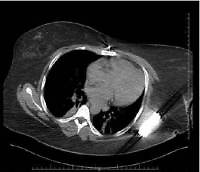Current issue
Archive
Manuscripts accepted
About the Journal
Editorial office
Editorial board
Section Editors
Abstracting and indexing
Subscription
Contact
Ethical standards and procedures
Most read articles
Instructions for authors
Article Processing Charge (APC)
Regulations of paying article processing charge (APC)
ARRHYTHMIAS / CLINICAL RESEARCH
Multicentre early experience with totally subcutaneous cardioverter-defibrillators in Poland
1
Department of Electrocardiology, Medical University of Lodz, Lodz, Poland
2
Department of Cardiology and Electrotherapy, Medical University of Gdansk, Gdansk, Poland
3
1st Chair and Department of Cardiology, Medical University of Warsaw, Warsaw, Poland
4
3rd Chair and Department of Cardiology, Silesian Medical University, Katowice, Poland
5
Department of Cardiology, Congenital Heart Diseases and Electrotherapy, SIlesian Medical University, Katowice, Poland
6
Department of Cardiosurgery, Medical University of Lodz, Lodz, Poland
Submission date: 2018-07-31
Final revision date: 2019-01-18
Acceptance date: 2019-01-19
Online publication date: 2019-05-21
Publication date: 2020-05-26
Arch Med Sci 2020;16(4):764-771
KEYWORDS
TOPICS
ABSTRACT
Introduction:
Implantable cardioverter-defibrillators (ICD) have a strong position in the prevention of sudden death. Nowadays, the most commonly used high-energy cardiac devices are transvenous ICDs. A new technology of totally subcutaneous ICDs (S-ICD) was invented and recently introduced into clinical practice in order to reduce lead-related complications of conventional ICDs. The aim of this paper is to present early experience with this new technology implemented in a few centres in Poland.
Material and methods:
Medical records of patients who had S-ICD-related interventions in Poland were retrospectively analysed.
Results:
During the first year of S-ICD introduction into the Polish health system 18 patients underwent surgery connected with S-ICDs. Majority of them (17 patients) were implanted de novo. In one patient surgical revision of a device implanted abroad was performed. Most of patients (78%) had S-ICDs implanted for secondary prevention. Inability of transvenous system implantation due to venous access obstruction or high risk of infection related with transvenous leads accounted for 83% of indications for S-ICD. Only in three patients were S-ICDs implanted due to young age and active mode of life. The implantations of S-ICDs were performed without important early or late complications. During follow-up one patient had episodes of ventricular arrhythmia successfully terminated with high-energy shocks. One patient died due to progression of heart failure.
Conclusions:
S-ICD implantation procedure has been successfully and safely introduced in Polish clinical routine. Nevertheless, despite clear indications in recent ESC guidelines, this therapy is not directly reimbursed in Poland and needs individual application for refund.
Implantable cardioverter-defibrillators (ICD) have a strong position in the prevention of sudden death. Nowadays, the most commonly used high-energy cardiac devices are transvenous ICDs. A new technology of totally subcutaneous ICDs (S-ICD) was invented and recently introduced into clinical practice in order to reduce lead-related complications of conventional ICDs. The aim of this paper is to present early experience with this new technology implemented in a few centres in Poland.
Material and methods:
Medical records of patients who had S-ICD-related interventions in Poland were retrospectively analysed.
Results:
During the first year of S-ICD introduction into the Polish health system 18 patients underwent surgery connected with S-ICDs. Majority of them (17 patients) were implanted de novo. In one patient surgical revision of a device implanted abroad was performed. Most of patients (78%) had S-ICDs implanted for secondary prevention. Inability of transvenous system implantation due to venous access obstruction or high risk of infection related with transvenous leads accounted for 83% of indications for S-ICD. Only in three patients were S-ICDs implanted due to young age and active mode of life. The implantations of S-ICDs were performed without important early or late complications. During follow-up one patient had episodes of ventricular arrhythmia successfully terminated with high-energy shocks. One patient died due to progression of heart failure.
Conclusions:
S-ICD implantation procedure has been successfully and safely introduced in Polish clinical routine. Nevertheless, despite clear indications in recent ESC guidelines, this therapy is not directly reimbursed in Poland and needs individual application for refund.
Share
RELATED ARTICLE
We process personal data collected when visiting the website. The function of obtaining information about users and their behavior is carried out by voluntarily entered information in forms and saving cookies in end devices. Data, including cookies, are used to provide services, improve the user experience and to analyze the traffic in accordance with the Privacy policy. Data are also collected and processed by Google Analytics tool (more).
You can change cookies settings in your browser. Restricted use of cookies in the browser configuration may affect some functionalities of the website.
You can change cookies settings in your browser. Restricted use of cookies in the browser configuration may affect some functionalities of the website.



